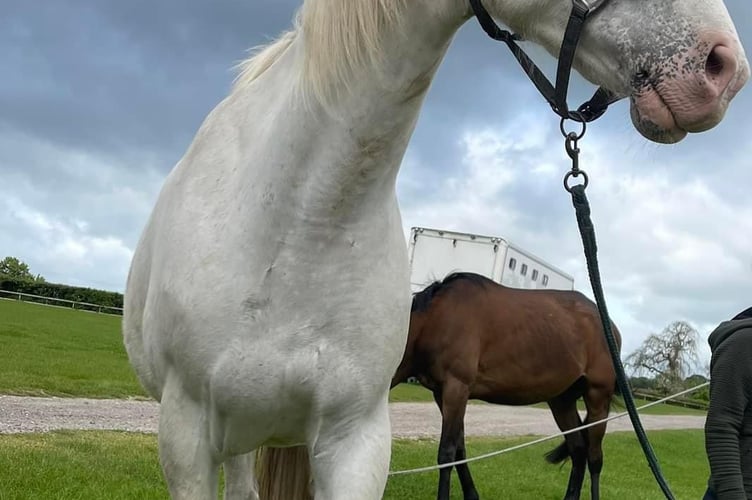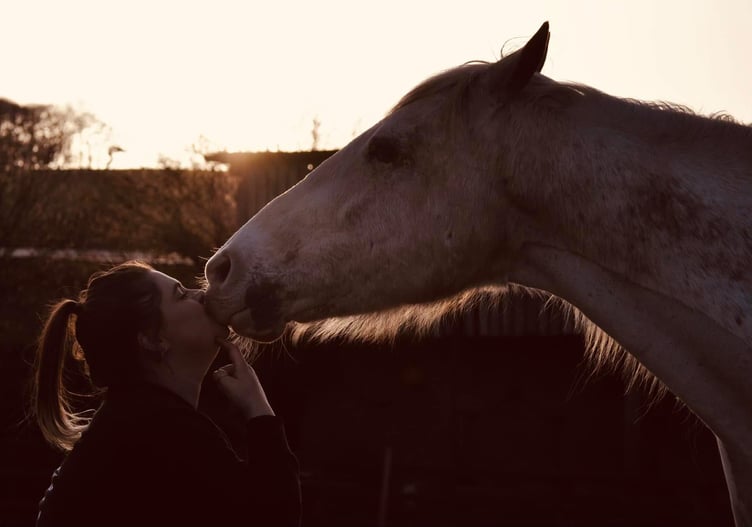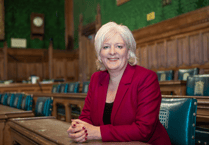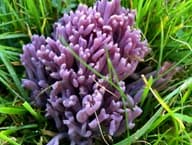One of the biggest problems with being a horse vet is that your patients often don’t like you very much! They soon learn that the vet may well give them a scratch, or even a treat, but this is usually a pretence to getting stabbed with a needle. Some horses seem to take this on the chin and grudgingly let you do what needs to be done, but others take exception and do whatever they can to avoid letting us anywhere near them. This behaviour is understandable, but when the horse weighs 600kg, has four hooves with metal shoes on and lightning fast reflexes, it presents us with a bit of a problem.
Mickey, is one of these horses, who absolutely hates the vet. Early last year Mickey had developed some discharge from his right eye and the lower eyelid seemed pushed out. After much cajoling, pleading and telling him (somewhat ironically) that he’s a ‘good boy’, I managed to get some sedation in his vein so I could get close enough to the eye to see what the problem was. Mickey is an ‘Appaloosa’ which often have pink/non-pigmented skin around their eyes and nose. This lack of pigment makes them prone to UV damage, a complication of which can be cancer. On examination, Mickey had a fleshy growth on his third eyelid. This tumour on the third eyelid was pushing his lower eyelid out away from the eye. Even under sedation I couldn’t examine the full extent of the mass because he kept flicking his head away, but the diagnosis was almost certainly a squamous cell carcinoma: an aggressive skin cancer.

The treatment is to surgically remove the entire third eyelid, but this is only successful if the tumour hasn’t already spread too far. We all decided we would do our best for Mickey, but I was worried about how on earth I was going to accurately operate around his eye when his avoidance behaviour was so extreme.
A week later I returned to the yard with one of our other equine vets, Jess, to attempt surgery on Mickey. The owner had given him sedation in his food in advance of us arriving to stop him getting too stressed. We can do a lot of surgery with horses sedated, but standing up, with local anaesthetic to numb the site we are operating on. This was the plan with Mickey, but if he wasn’t amenable, we would have to move to a general anaesthetic with him unconscious on the ground: this comes with increased risk and increased cost. Remarkably, with lots of sedation, good local anaesthetic ‘blocks’, ear plugs and a padded headstand for him to rest his chin on, we successfully removed the entire third eyelid along with the tumour.
We put Mickey onto some anti-cancer medication for several months afterwards, but we are now 18 months post-surgery and haven’t had any recurrence.
If you see anything out of the ordinary on your horse (or other animal), try and get it checked out quickly, as delays to treatment can worsen the chance of a successful outcome.
Mickey, despite his successful operation, still despises me!





Comments
This article has no comments yet. Be the first to leave a comment.